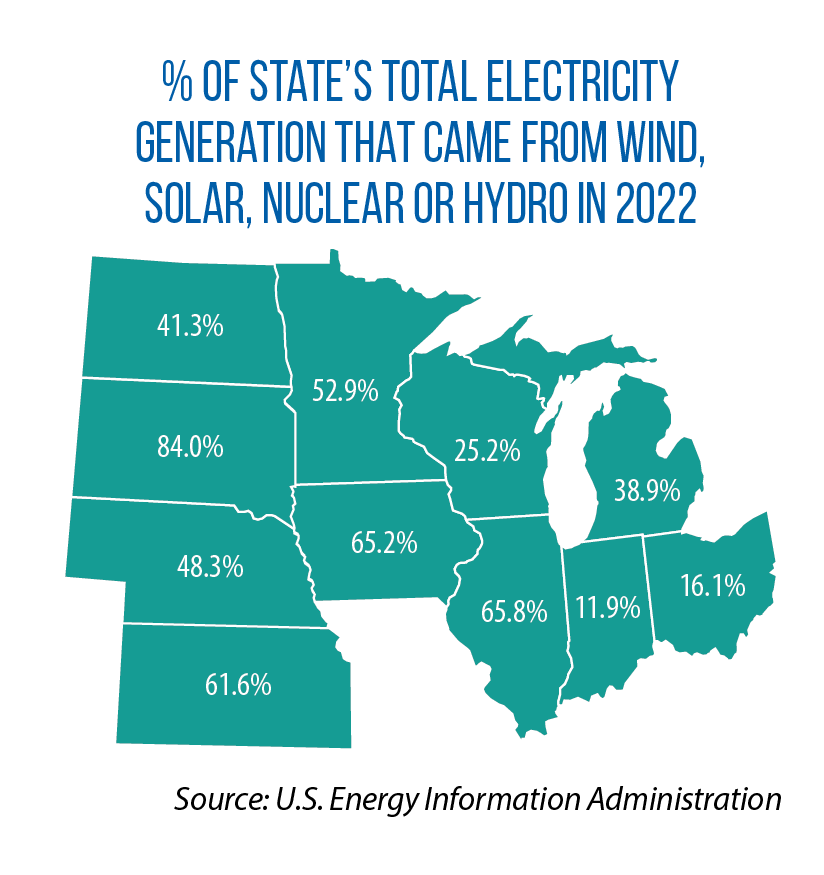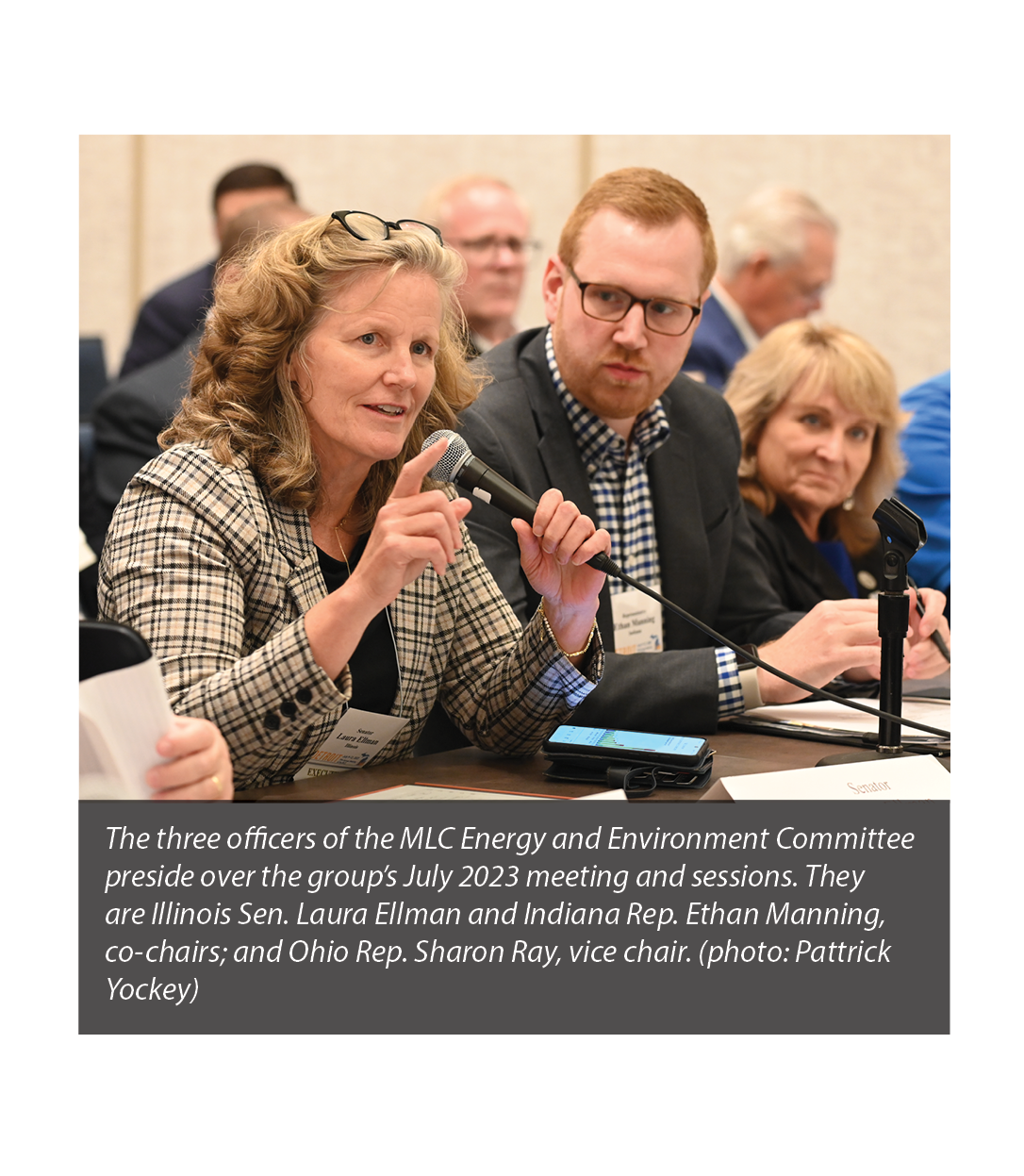New MLC Energy & Environment Committee hears how changes in climate, shift to renewables will impact electrical grid
The Midwest’s transmission grid is rapidly evolving to handle the dramatic shifts toward renewable energy for power generation and customer usage patterns wrought by climate change, but this transition is still measured in years.
That was the message from Bob Kuzman, director of state regulatory affairs for the Midcontinent Independent System Operator (MISO).
Kuzman, a former Indiana legislator, provided lawmakers with an introduction to the regional electrical grid at the Midwestern Legislative Conference Annual Meeting in July. He was the featured presenter at the first meeting of the MLC’s new Energy and Environment Committee.
MISO operates 72,000 miles of transmission lines, including in Illinois, Indiana, Iowa, Manitoba, Michigan, Minnesota, North Dakota and parts of South Dakota.
“We’re like an insurance policy; we spread the risk,” Kuzman said. “If someone’s having a bad day in Indiana, we can move electricity from as far away as Manitoba or Nebraska.”
MISO is neither a utility operator nor a power generator. Its main jobs, he said, are planning for future transmission needs as well as buying electricity at the wholesale and retail levels to deliver power where it’s needed for 42 million end users.
While taking no position on the fuel sources used, MISO does care about how new generating capacity is connected to the grid, and how dependable the power will be as usage patterns shift.
Big shifts in both of these areas pose potential challenges for MISO and state energy leaders.
According to Kuzman, renewable energy generation projects are “growing massively.” As of September 2022, of the 1,723 proposed projects in the MISO “queue” (not all of which will be built), 96 percent were either planned renewable or storage operations: 54 percent solar, 17 percent a hybrid mix, 16 percent storage and 9 percent wind. Only 3 percent were gas or other fuels; coal-generated projects haven’t been in the queue since 2011.
“This does pose new risks to the reliability of the grid,” he said, “because there are days when the wind doesn’t blow, there are days when the sun doesn’t shine.”
Part of MISO’s new planning regimen, he added, includes how to fill in daily morning and evening gaps in electrical generation as solar and wind power get going or wind down. Battery storage technology is improving, but isn’t yet at the point where MISO can rely on it to cover those gaps, he said.
Further complicating matters are the effects of changes in the climate. MISO used to plan for a “worst day,” or highest demand on the system, twice per year; now, Kuzman said, it needs to make sure power is delivered across the region on a “worst day” in every season and in every month.
He said “shoulder” months such as April or October — neither too hot nor too cold, when gas or coal plants could be taken offline for maintenance or to switch fuel sources — don’t really exist anymore.
With more 70- and 80-degree days in October, and even November, more electricity is being used in those months, and temperatures are staying hotter deeper into nighttime hours, thus extending daily peak morning and evening demand hours — all of which increase demand on the grid.
Asked about nuclear power as another non-hydrocarbon source of electricity, Kuzman said MISO doesn’t expect to see proposals for large-scale nuclear plants due to costs. Small modular reactors are a potential option, but no one knows when they’ll be ready. When, and if, they are, MISO will plan for them, too.
“MISO is resource neutral. We just want to keep the lights on,” Kuzman said.